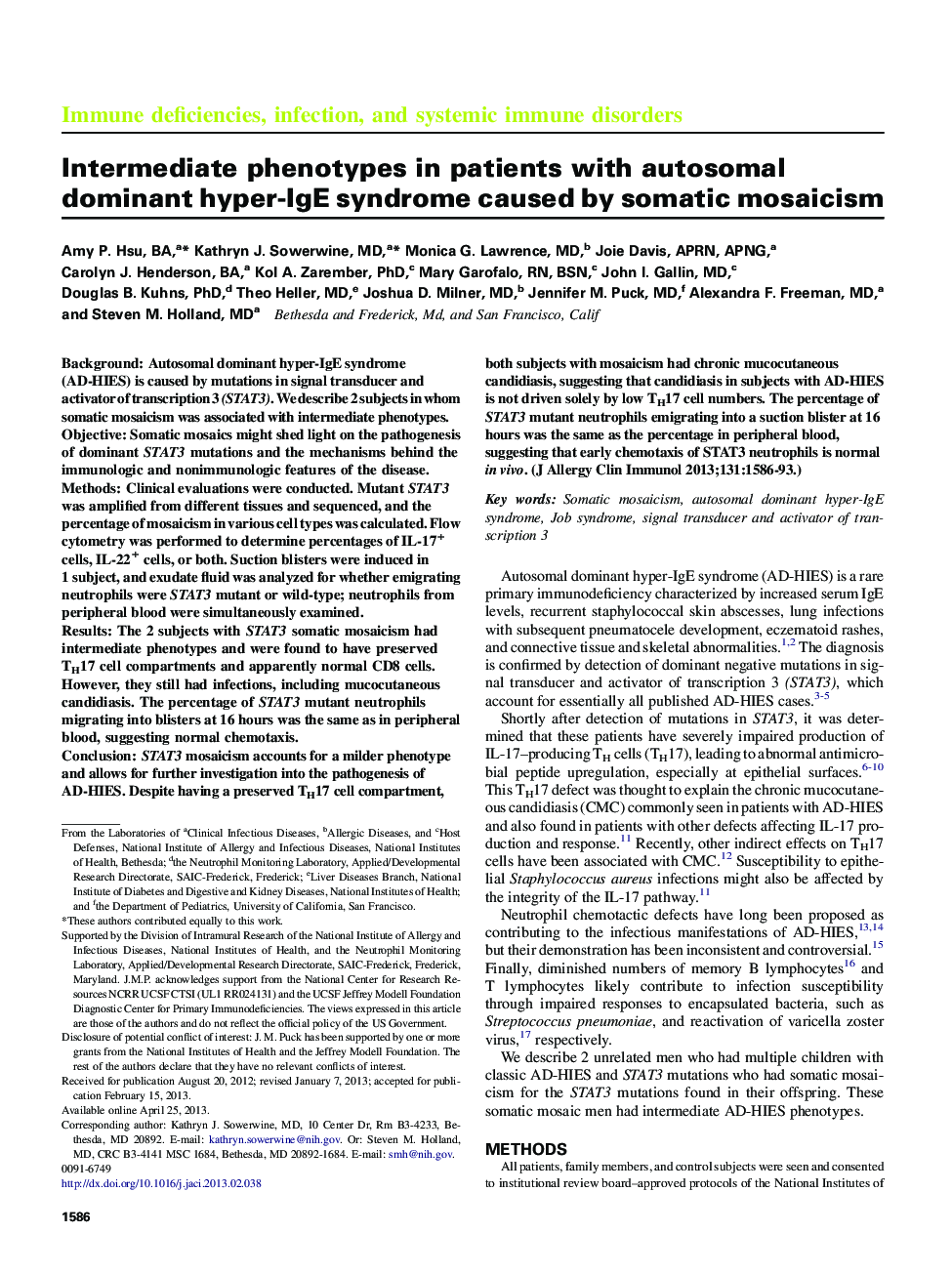| کد مقاله | کد نشریه | سال انتشار | مقاله انگلیسی | نسخه تمام متن |
|---|---|---|---|---|
| 3198183 | 1201881 | 2013 | 8 صفحه PDF | دانلود رایگان |

BackgroundAutosomal dominant hyper-IgE syndrome (AD-HIES) is caused by mutations in signal transducer and activator of transcription 3 (STAT3). We describe 2 subjects in whom somatic mosaicism was associated with intermediate phenotypes.ObjectiveSomatic mosaics might shed light on the pathogenesis of dominant STAT3 mutations and the mechanisms behind the immunologic and nonimmunologic features of the disease.MethodsClinical evaluations were conducted. Mutant STAT3 was amplified from different tissues and sequenced, and the percentage of mosaicism in various cell types was calculated. Flow cytometry was performed to determine percentages of IL-17+ cells, IL-22+ cells, or both. Suction blisters were induced in 1 subject, and exudate fluid was analyzed for whether emigrating neutrophils were STAT3 mutant or wild-type; neutrophils from peripheral blood were simultaneously examined.ResultsThe 2 subjects with STAT3 somatic mosaicism had intermediate phenotypes and were found to have preserved TH17 cell compartments and apparently normal CD8 cells. However, they still had infections, including mucocutaneous candidiasis. The percentage of STAT3 mutant neutrophils migrating into blisters at 16 hours was the same as in peripheral blood, suggesting normal chemotaxis.ConclusionSTAT3 mosaicism accounts for a milder phenotype and allows for further investigation into the pathogenesis of AD-HIES. Despite having a preserved TH17 cell compartment, both subjects with mosaicism had chronic mucocutaneous candidiasis, suggesting that candidiasis in subjects with AD-HIES is not driven solely by low TH17 cell numbers. The percentage of STAT3 mutant neutrophils emigrating into a suction blister at 16 hours was the same as the percentage in peripheral blood, suggesting that early chemotaxis of STAT3 neutrophils is normal in vivo.
Journal: Journal of Allergy and Clinical Immunology - Volume 131, Issue 6, June 2013, Pages 1586–1593